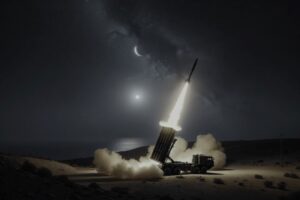
How does Israel detect and destroy so many targets in Syria, Gaza, and elsewhere in the Middle East?
The IDF relies on a highly sophisticated robot with stunning capabilities to revolutionize intelligence collection and detect enemy assets. Known simply as “the machine,” the system can gather and analyze huge amounts of information and translate them into actionable battlefield data.
The IDF intelligence machine was exposed for the first time by military affairs journalist Alex Fishman in Yediot Aharonot daily. The powerful system enables the army to quickly identify and destroy thousands of enemy targets a day if necessary, sometimes within minutes of being spotted.
The IDF upgraded the machine since then so it can now automatically detect enemy targets. This capability was first tested during the 2021 Gaza war.
The military uses the machine to analyze intelligence from diverse sources including satellite images, electronic surveillance, cyber operations, border sensors and social media posts. The system then uses artificial intelligence to link seemingly unrelated data and identify high-value information and targets.
The machine’s most prominent impact has been to dramatically and rapidly expand the IDF’s bank of potential enemy targets. In the 2006 Lebanon War, the army entered the conflict with a list of only 300 targets. By now, Israel has a list of thousands of Hezbollah assets that can be hit immediately.
IDF’s lethal doctrine
The change has been truly dramatic. Today, the IDF can acquire within two weeks the same number of targets that would take a year to produce before, Fishman says. This enabled the army to quickly compile a huge database of military assets across the Middle East, in nearby and remote locations.
Intelligence analysts can now feed requirements into the machine as they search for Gaza terror tunnels or Lebanon arms depots, and quickly get answers and recommendations for action. Israel is also boosting the list of potential targets inside Iran.
The IDF intelligence machine is a key piece in the military’s shift to a more lethal doctrine. Army Chief Aviv Kochavi has been pushing for a system that can hit within minutes any enemy target that goes into the database. This could be a rocket launcher, a dangerous ambush or a senior Hezbollah commander, the article says.
Kochavi believes that the ability to rapidly eliminate hostile targets is crucial for the IDF’s operational concept. As missiles currently constitute the main threat, and as Israel’s foes lack centers of gravity that can be readily destroyed, the IDF must be able to quickly paralyze enemy capabilities to protect the home front and win wars.
The technological revolution in the intelligence branch is also changing manpower requirements, Fishman says. By now, tech experts constitute 40% of its permanent staff. These figures are likely to grow further as the IDF intelligence machine continues to expand and improve.


